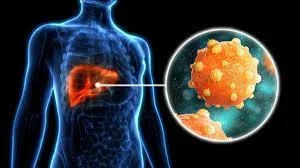The Maritime Industry Advocacy Initiative (MAIN) has frowned at on-going developments at Nigeria’s apex maritime regulatory agency; the Nigerian Maritime Administration and Safety Agency (NIMASA); especially as they concern the faith of the agency’s director general; Mr Temisan Omatseye and two of his executive directors.
In a statement issued in Lagos on Wednesday and signed by the group’s executive director; Mr Sesan Onileimo, the non-governmental organization observed that NIMASA has had the misfortune of an embarrassingly high turn -over of chief executives.
Since 2007 when the NIMASA was created following the merger of both the then- National Maritime Authourity (NMA) and the Joint Maritime Labour Industrial Council (JOMALIC), it has had three chief executives. We think that this is not only very bad for the maritime industry, it also sends a very wrong signal to the global maritime community which is beginning to see Nigeria as very serious and investor-friendly country.
While not holding forth for the embattled NIMASA boss, we can recall that within a short spate of one year, his management has been able to draw a lot of investments into the country; especially in the areas such as: ship building/repairs, dockyard facilities, ship financing. It is on record that we now have investors from countries from Singapore, Malaysia, India and South Africa; among others; all with genuine interests in doing business with Nigeria shipping sector operators. We also know for a fact that the current management has shored up the revenue base of the agency and that it is currently engaged in legal battle to ensure that the Nigerian Liquefied Natural Gas pays all accruable revenue that it has refused to pay over the years.
Our greatest concern is about the effect of the frequent changes on the private sector players in the industry. This is more worrisome because the burgeoning relationship between Indigenous ship owners and their foreign partners will be threatened by unstable leadership since NIMASA is the facilitator and mover of such investment windows.
We saw this trend when NIMASA was created and its pioneer director general lasted for only a few months before bowing to pressure from those who used the Economic and Financial Crimes Commission (EFCC) to hound her out. The trend was replicated when Dr Ade Dosunmu was clandestinely schemed out of office to pave way for Omatseye who is now treading the same part, having being accused of financial impropriety.
Those who have insinuated that the agency is jinxed may not be far from the truth considering the fact that even during the days of NMA, there was no chief executive who spent more than four years in office.
Since 1987 when NIMASA’s progenitor; NMA was created there have been at least 10 chief executives. A further breakdown shows that between 1987 and 2007 when NIMASA was created, there had been about six chief executive officers: namely Ekong, Ja’far, Egesi, Eneh, Agu, Ugwu.
We are deeply worried about the morale of employees of NIMASA who have had to endure these instabilities and the attendant effect on productivity.
Rather than seek to appoint ‘their own person’ as DGs of NIMASA, successive ministers of transport should engender a good working relationship between the agency’s management, the board and the ministry.
It is constant that when ‘troubles’ are instigated against the DG and he is swept off , the board is equally swept along with him and in some cases, the executive management is also affected.
In the current case, we do not see how the embattled DG can work any longer with the board which appear to have hurriedly taken sides with those who want Omatseye to leave office.
















Discussion about this post